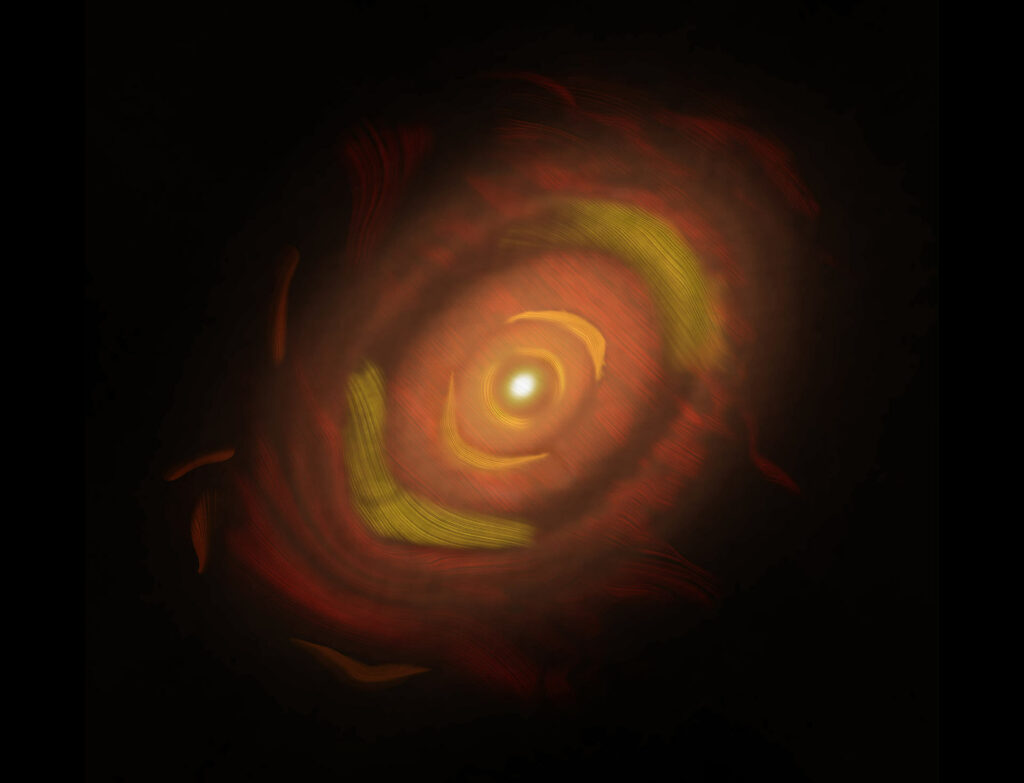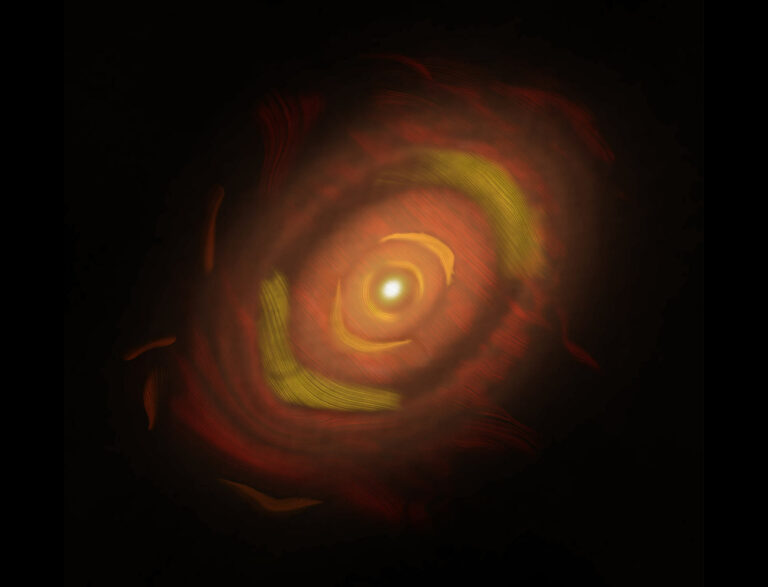ALMA Observes Dust Particles within Gaps in the Protoplanetary Disk of HL Tauri
Astronomers using the Atacama Large Millimeter/submillimeter Array (ALMA) have captured a high-resolution image of HL Tauri, a young star in the constellation of Taurus.
HL Tauri is situated in the Taurus constellation, approximately 450 light-years away. Recognized by various designations such as EPIC 210690913, HH 150, or TIC 353752575, this star is estimated to be less than 100,000 years old. The protoplanetary disk surrounding HL Tauri is notably extensive and luminous, making it a promising location for investigating the early stages of planet formation.

Worcester State University astronomer Ian Stephens and his team are engaged in studying the intricate process of planetary formation, which involves the gradual growth of dust grains in the protoplanetary disk through collisions and agglomeration. This growth process may lead to the formation of objects resembling those found in our Solar System. The researchers focus on examining the orientation of light waves emitted by dust grains, known as polarization, to gain insights into these complex structures.
While previous studies of HL Tauri have explored polarization, Stephens and colleagues have achieved an unprecedented level of detail in their polarization image. This image is based on ten times more polarization measurements than any other disk and a hundred times more measurements than the majority of disks, making it the most profound polarization image of any disk to date.
Captured at a resolution of 5 astronomical units (AU), equivalent to the distance from the Sun to Jupiter, this image reveals subtle polarization patterns within the disk. The researchers found an asymmetry in the distribution of polarized light, suggesting variations in the properties or arrangement of dust grains across the disk. Dust grains, which are not necessarily spherical, can exhibit shapes like thick pancakes or grains of rice, influencing the polarization of emitted or scattered light.
A surprising outcome of the study is the discovery of more polarization within the gaps of the disk than in the rings, despite the rings containing a higher concentration of dust. The polarization within the gaps is attributed to aligned dust grains, while the polarization in the rings is more uniform, indicating a prevalence of scattering. The researchers propose that the alignment of dust grains within the gaps may be due to their aerodynamics rather than alignment along the magnetic field of the disk, as observed in most dust outside of protoplanetary disks.
The findings appear in the journal Nature.
Do not forget to share your opinion with us to provide you with the best posts !




0 Comments